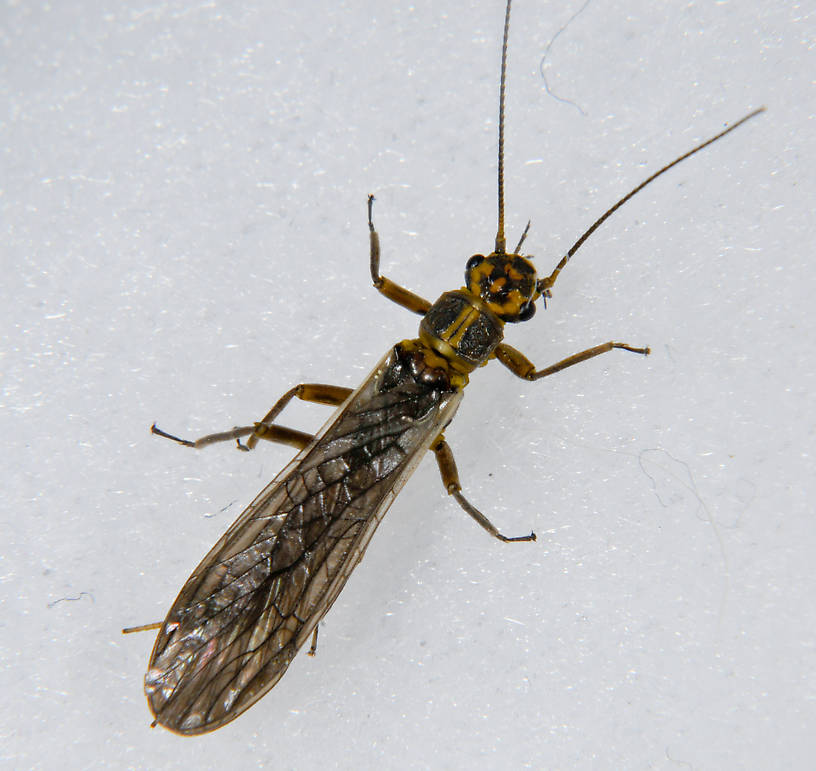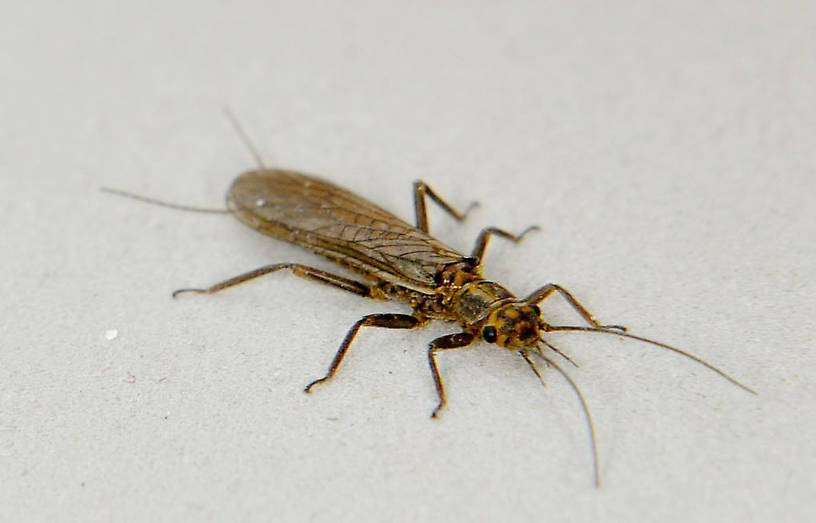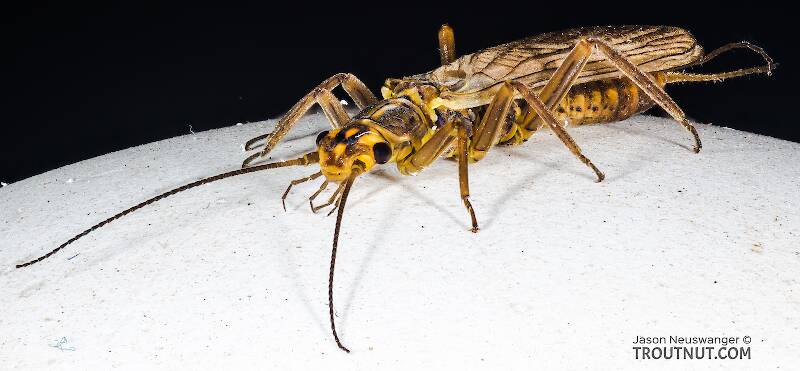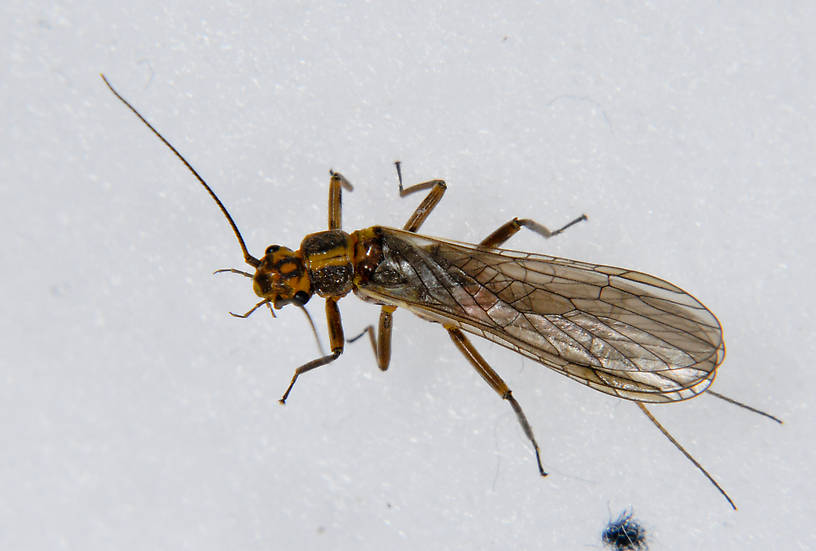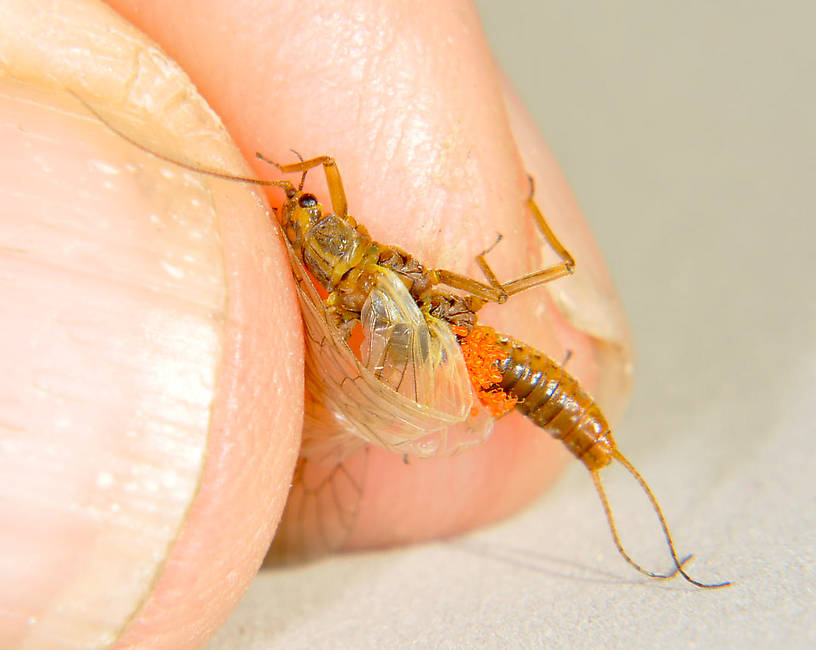
Hex Mayflies
Hexagenia limbata
The famous nocturnal Hex hatch of the Midwest (and a few other lucky locations) stirs to the surface mythically large brown trout that only touch streamers for the rest of the year.


Stonefly Species Isoperla fulva (Yellow Sallies)
Where & when
Isoperla fulva has been found across the West in a wide variety of streams of different sizes, substrates, and at different elevations, from the high mountains of Colorado to the coastal hills of Washington.Adults can emerge throughout the summer, but most have been collected from mid-June through early July.
In 41 records from GBIF, adults of this species have mostly been collected during May (27%), June (27%), July (24%), and April (15%).
In 3 records from GBIF, this species has been collected at elevations of 5400, 7589, and 8999 ft.
Species Range
Identification
Species ID from GBIFthe Global Biodiversity Information Facility
Source: The Isoperla Of California (Plecoptera: Perlodidae); Larval Descriptions And A Key To 17 Western Nearctic Species
Diagnosis. The male larvae of Isoperla fulva are most similar to other western species of the Isoperla marmorata complex. They all share dark pigmented bodies and the pronotum is almost completely dark except for the median light band and lateral margins (Figs. 8, 10, 16 a-d). The lacinia of these species is also similar. The larvae of Isoperla fulva larvae are inseparable from Isoperla roguensis (Figs. 16 a-h & 20 n), but both can be distinguished from Isoperla marmorata by the lack of a median longitudinal light band connecting the light M shaped pattern to the unpigmented frontoclypeus (Fig. 8 a).
Physical description
Most physical descriptions on Troutnut are direct or slightly edited quotes from the original scientific sources describing or updating the species, although there may be errors in copying them to this website. Such descriptions aren't always definitive, because species often turn out to be more variable than the original describers observed. In some cases, only a single specimen was described! However, they are useful starting points.
Description from GBIFthe Global Biodiversity Information Facility
Source: The Isoperla Of California (Plecoptera: Perlodidae); Updated Male Descriptions And Adult Keys For 18 Western Nearctic Species
Male. Aedeagus: sclerotized posterior process present; body with one posterior lobe, one small dorsal lobe, and one large anterior lobe (Fig. 6 a); one small bulbous patch of spinulae above sclerotized process (Figs. 6 a-c); sclerotized process length approaching 0.5 mm when fully extended, blade-like in lateral view (Fig. 6 a), distal margin expanded and slightly membranous in posterior view (Fig. 6 b), and narrow proximal portion of sclerotized process sometimes extended past posterior aedeagal membrane (Fig. 6 a). Abdominal terga 8 - 9, 9, 9 - 10: without stout spinulae or long stout setae. Posterolateral margins of at least abdominal segment 8 with scale-like setae clustered in brushes of several setae. Paraprocts: curved dorsally, length if straightened subequal to combined first and second cercal segments, tapering abruptly to blunt apices (Fig. 6 a). Vesicle: rounded lobe, widest at base with broadly rounded apical margin (Fig. 6 d).
Specimens of the Stonefly Species Isoperla fulva
2 Adults
3 Male Adults
Start a Discussion of Isoperla fulva
Stonefly Species Isoperla fulva (Yellow Sallies)
Species Range
Common Names
Resources
- NatureServe
- Integrated Taxonomic Information System
- Global Biodiversity Information Facility
- Described by Claassen, P.W. (1937) New species of stoneflies (Plecoptera). The Canadian Entomologist 69, 79–82.


